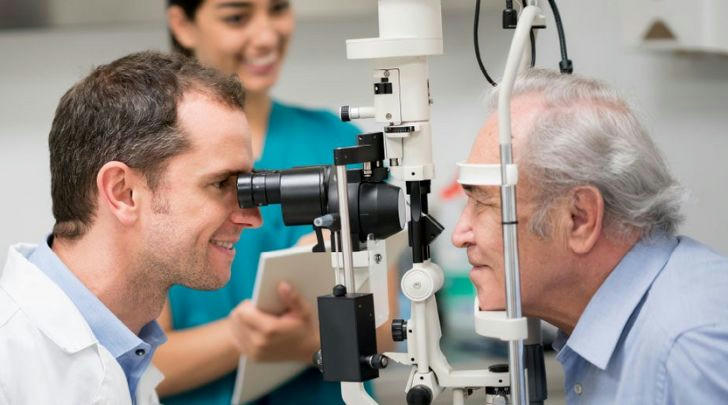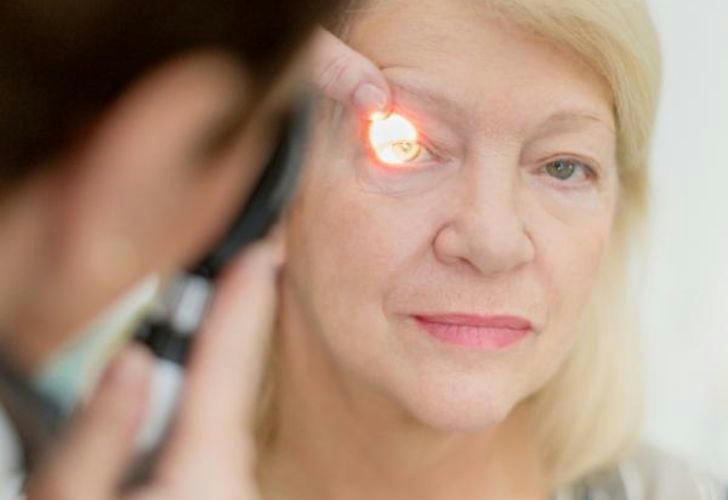Eye exams offered by the American Academy of Ophthalmology
Between the ages of 40 and 65, the eyes can undergo significant and malignant changes. In response, the American Academy of Ophthalmology has launched a service program that will provide eye exams to uninsured and underinsured individuals aged 18 and over starting April 7.

Eye diseases are all around you
In the United States, approximately 1.3 million people over the age of 40 are legally blind. Additionally, 12 million people over the age of 40 have visual impairment, and eye diseases such as glaucoma and cataracts have a serious impact on public health.

Common Eye Diseases
Cataracts
- Definition and Causes: Cataracts are clouding of the lens of the eye, usually caused by aging, diabetes, long-term exposure to ultraviolet light, and certain medications.
- Symptoms: Common symptoms include blurred vision, difficulty seeing at night, sensitivity to light, and seeing halos around lights.
- Treatment Options: Treatment usually involves surgical removal of the cloudy lens, which is typically replaced with an artificial lens. Lifestyle changes, such as wearing sunglasses and managing diabetes, can also help.
Glaucoma
- Intraocular Pressure and Effects: Glaucoma is characterized by increased intraocular pressure, which can damage the optic nerve and lead to vision loss. There are two main types: open-angle glaucoma (the most common type) and closed-angle glaucoma (the less common but more serious type).
- Symptoms: Glaucoma is usually asymptomatic in its early stages, with noticeable symptoms, such as loss of peripheral vision, only appearing in advanced stages.
- Treatment Options: Treatment may include prescription medications to lower intraocular pressure, laser treatments, or surgery to improve drainage.
Diabetic Retinopathy
- The Link Between Diabetes and Eye Health: Diabetic retinopathy is a complication of diabetes that affects the blood vessels of the retina, leading to visual impairment. There are several stages of disease progression: mild non-proliferative, moderate non-proliferative, severe non-proliferative, and proliferative diabetic retinopathy.
- Symptoms: Common symptoms include blurred vision, floaters, and dark areas in the visual field.
- Treatment Options: Treatment options include laser treatment to seal leaking blood vessels, injections of medication into the eye, and surgery for advanced cases.
Importance of Regular Eye Exams
Regular eye exams are essential for early detection of eye diseases, which often have no symptoms in the early stages. These exams can detect problems such as glaucoma and cataracts early, preventing vision loss and allowing for timely treatment and better health outcomes.

Early Detection of Eye Diseases
Many serious diseases, such as glaucoma, macular degeneration, and diabetic retinopathy, develop gradually but without obvious symptoms. Regular exams enable optometrists to identify early warning signs, allowing timely intervention to slow or stop the progression of the disease.
Prevention of Vision Loss
Regular eye exams can detect increased eye pressure or nerve damage before vision is affected, especially in conditions such as glaucoma. Early diagnosis allows for treatment, which significantly reduces the risk of irreversible vision loss.
Age-Specific Recommendations
- Children should have their first eye exam at six months of age, followed by additional exams at age three and before school entry.
- Adults aged 18-64 should have an annual exam based on their vision needs and medical history.
- Annual exams are recommended for those aged 65 and older to monitor age-related conditions.
How to Get Eye Exam Services
You can enroll through programs such as EyeCare America, which connects eligible individuals with local eye doctors.
Enrollment Process
To enroll for an eye exam, you can contact a participating eye care professional directly or use an online platform that facilitates appointment booking. Many vision care plans, such as those offered by Davis Vision, allow you to join their network by filling out an application, which often includes providing your credentials and practice information. The certification process can take up to 90 days, during which time your qualifications and experience will be verified.
Service Locations and Availability
Eye exams can be performed at a wide range of locations, with more than 152,000 service points nationwide, such as retail chains, private clinics, and local clinics. It is recommended to call ahead to confirm service availability, especially during periods when businesses have limited hours or are temporarily closed. Many eye care professionals are part of large networks, ensuring you have access to a wide range of services and providers in your area. To find out if you qualify, visit EyeCare America's online referral center.
Impact on Community Health
The American Academy of Ophthalmology’s eye screening service has significantly improved community health by increasing access to basic eye care, especially in underserved areas. Partnering with community health centers helps address inequities in access to eye care and improves the overall health of vulnerable populations
Summary
In summary, regular eye exams are essential to preventing serious eye diseases that can lead to vision loss or blindness. By taking advantage of the new eye exam service offered by the American Academy of Ophthalmology, individuals can ensure they receive the necessary care to maintain their eye health. Prioritizing regular eye examinations is crucial for early detection and intervention, ultimately contributing to better health outcomes for individuals and the community as a whole.
